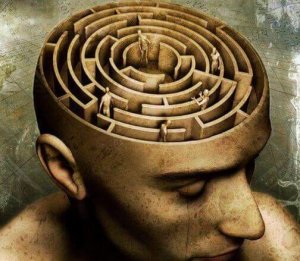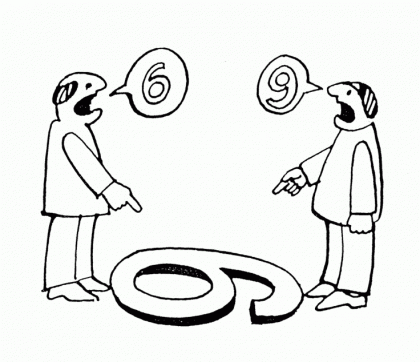Constructivism: How Do We Construct Our Reality?

For a long time, philosophers and scientists have asked how we perceive reality and how we acquire knowledge. In this article, we are going to talk about one of the schools of thought that answers these questions: constructivism. The constructivist theory provides us with an interesting lens for the study of psychology.
Before talking about constructivism, we should review its history and understand where it comes from. In order to keep things simple, we will try to pose the issue in the following two ways: the antecedents on the acquisition of knowledge, and the antecedents on the perception of reality.
How do we acquire knowledge?
Where do our ideas and mental representations come from? The classical theories that explain this question are grouped into two areas: empiricism and innateness.
Empiricism is based on the premise that all our knowledge comes from experience. The environment gives us even the smallest and simplest ideas, to be later captured by our brain and learned.
The assumption of this position is that knowledge is completely outside of us and passes to the mind. It may come from others or from reality itself, which the individual copies. Empiricism is a theory that is very consistent with common sense. It has inspired other schools of psychology, such as behaviorism.

Innatism was born because empiricism seemed insufficient. We could accept that a good part of knowledge is acquired from external sources. However, it is no less true that we are born with certain dispositions, like relating to each other using sophisticated language.
Thus, innatism starts from the postulate that there is knowledge that is not acquired through experience. This knowledge — or programming — is very necessary to organize our experience (categories of space, time, number), for example.
The problem that innateness poses to us is that it falls short when it comes to explaining how that knowledge arises. It also doesn’t explain why certain knowledge arises at different times. Above all, it doesn’t explain why there are individual differences. Constructivism seeks to solve this problem, along with the problems that empiricism presents.
Constructivism starts with the principle that knowledge is the result of a continuous interaction between reality and the individual. The individual is like an intuitive scientist. He collects data about his reality and creates interpretations about his environment. These interpretations help us create our own world and are a basis for the following interpretations.
How do we perceive reality?
This has also been one of the big questions, and a multitude of possible solutions have been put forth. The most intuitive response and the first that history presents to us is realism. From this perspective, we think that we receive an exact copy of reality. What we see, hear, and touch is exactly what we perceive, and all individuals perceive it the same.
Realism soon fell under its own weight. Many philosophers realized that the senses do not perceive reality perfectly. Descartes and Hume even went so far as to say that it was possible that there is no reality behind the senses. Here is another possible solution: the senses give us an imprecise reflection of reality. We no longer observe reality directly; according to this premise, we see only a shadow of reality.
Even so, we can see some deficiencies in this last explanation. For example, although we all have the same senses, we do not all perceive the same situation in the same way. It seems that the shadow of reality changes according to the individual who looks at it. This is where constructivism tells us that our perception is not only a reflection of reality, it is more complex than that.

Constructivist theory tells us that the senses give us information about reality, but this is too chaotic for our brain. Therefore, to be able to process this information, the brain has to structure it. To do so, it categorizes the unstructured information into concepts and interpretations. Here, reality is inaccessible to us.
Constructivism and socio-constructivism
To put it succinctly, we can understand constructivism as an epistemological postulate in which we are active agents of our perception, and we do not receive a literal copy of the world.
It is us, through our perceptions, who give shape to the world inside and outside us. Now, if each one of us is an active agent who builds his reality, how is it possible that all people have a very similar vision of reality?
To find an answer to this, we can turn to the psychologist Vygotsky and his socio-constructivist theory based on culture. Although each one of us builds our own world, we are all born in a society and culture that guides us.
When we are born immersed within a culture, this not only guides our interpretations, it also gives us a multitude of constructions to borrow from. Some evidence in favor of this is that our constructions of reality resemble those of people from our own culture more so than those of people from distant cultures.

The conclusion underlying all this is that all ideas, knowledge, and theories are social constructs. Reality is alien to us. Even physical laws are part social construction and have a shared conceptual framework. In this sense, science would no longer explain the events of reality, but the events of our joint construction of reality.
These postulates have been, to a certain extent, a revolution in the history of psychology and other sciences. Thanks to socio-constructivism, many areas of psychology have totally changed paradigms and expanded their view. The question now is: is constructivism the correct answer, or do we still have more to learn?
This text is provided for informational purposes only and does not replace consultation with a professional. If in doubt, consult your specialist.








